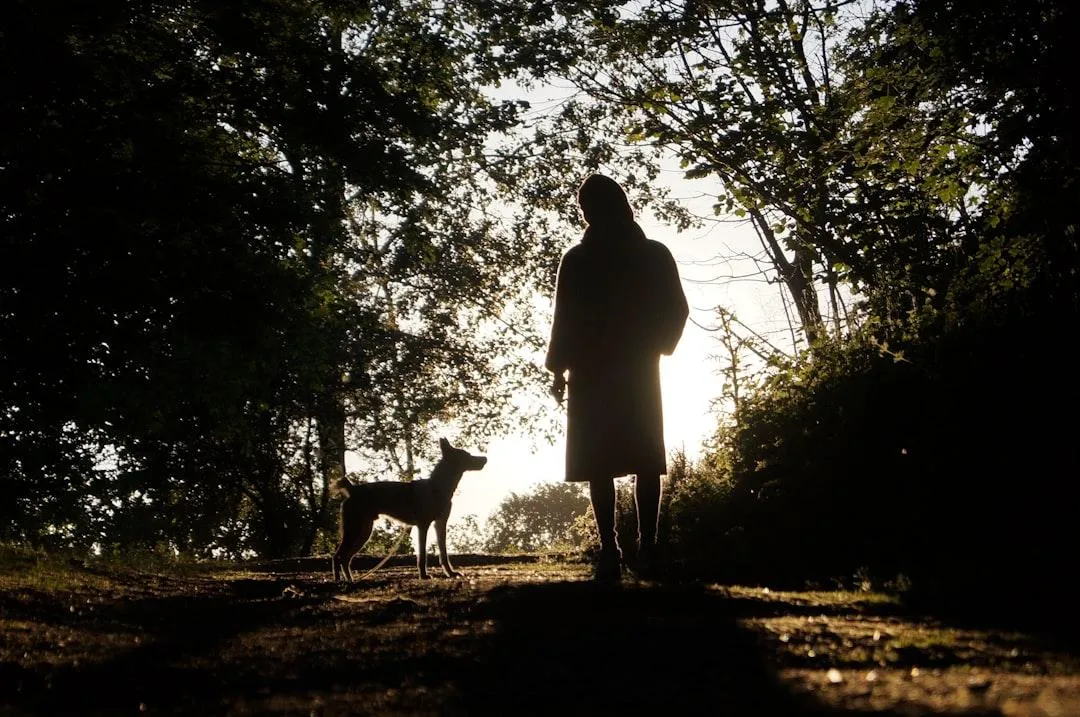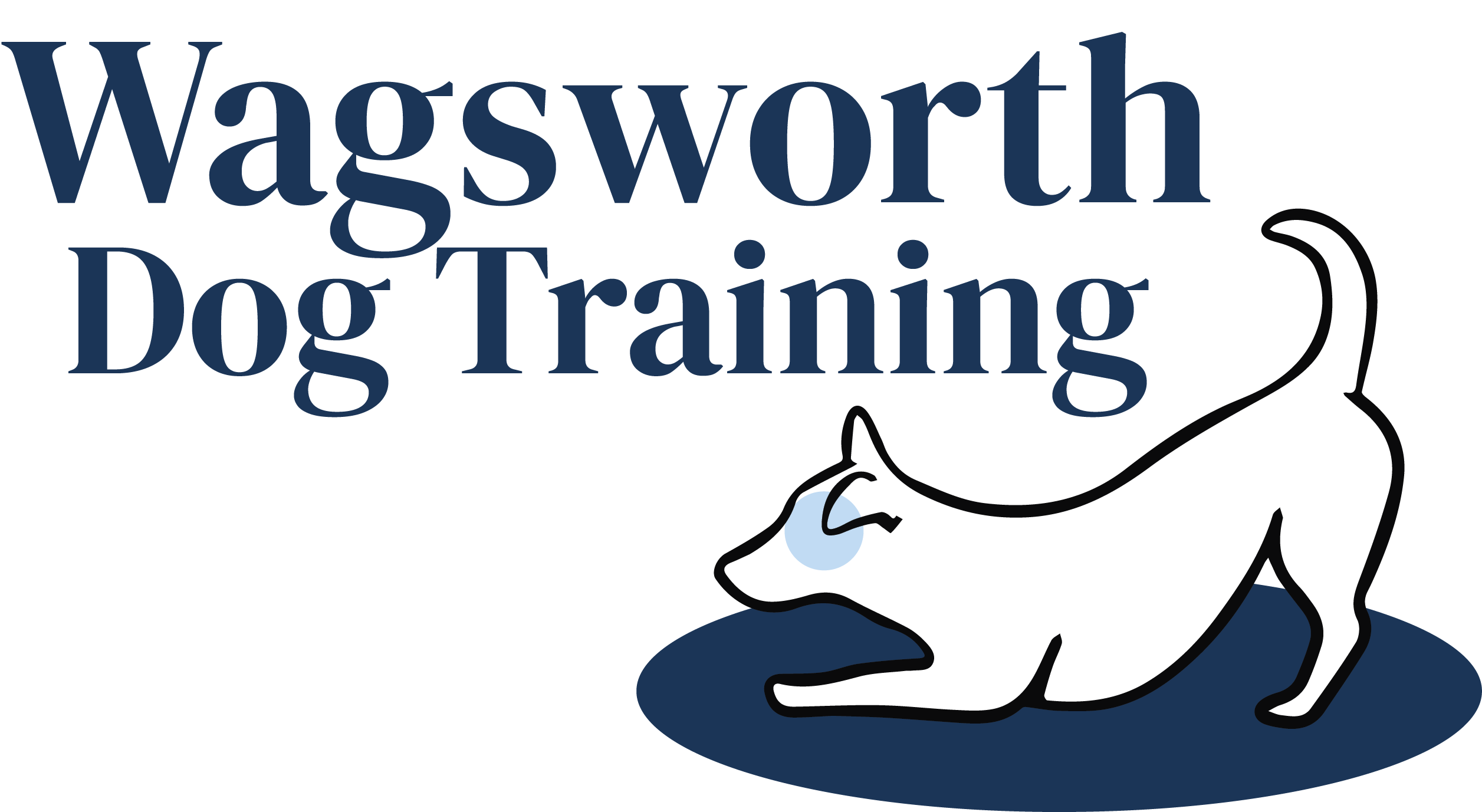
The Art of The Sniffari
“Human noses have about six million of these sensory receptor sites; sheepdog noses, over two hundred million; beagle noses, over three hundred million.” - A. Horowitz
What is a Sniffari?
A sniffari is a safari of the nose — an adventure for your dog. One of the ultimate forms of environmental enrichment and reinforcement. Far different from many standard dog walks, a sniffari is about following your dogs' nose around, within the bounds of safety.
To do this you need to find a quiet, safe, enriching place to explore.
You'll also need to adjust your leash handling skills to facilitate this style of exploration.
Scent is your dogs primary sense. While sniffing everything on a walk might not seem important to you, to not provide them ample sniffing time is to rob them of their ability to perceive the world properly.
The only goals on a sniffari, or sniffy walk are to enjoy yourself and facilitate safety and hassle-free exploration for your dog.
The only rules are no moving forward with tension on the leash, and nothing unsafe.
A sniffari is a wonderful thing that can be both entertaining and calm, enriching and fulfilling for dog and human alike — but there is a learning curve, which is why I wrote this post!
Follow these tips to have sniffari success! 🐕
1. Learn BAT 2.0 leash handling skills
BAT, or Behavior Adjustment Training, is a training protocol created by Grisha Stewart which has many great components — however my favorite is the BAT 2.0 or 3.0 leash skills.
The amount of freedom that you can provide a dog, all while maintaining a safe and easy level of control when needed is invaluable.
The general idea is using specific handling skills with a 15' rope or biothane leash to easily provide your dog what is essentially an off leash level of freedom within the radius of the leash.
I use these leash handling skills in my dogs everyday life, and can tell you that your dog will absolutely appreciate you learning even some of them.
To talk about learning the BAT leash handling skills, book a discovery call and ask about our Sniffari Success Program!
2. Cultivate patience
A sniffari can be a challenging experience for us humans to learn. We are very goal oriented, always going somewhere or for a set amount of time. A sniffari may have a time limit, but to succeed you cannot have your own agenda during this time.
Add to this the fact that teaching your dog to walk like this, calmly, might be a process on it's own — and you will need ample patience to succeed.
Remind yourself that you are doing this to provide your dog one of the greatest freedoms they can have.
Remind yourself that scent is their primary sense, and that by taking them on a sniffari you are allowing them to truly take in the world in their own way.
Remind yourself how patient your dog is with you.
3. Learn to read your dogs body language
Dogs are constantly speaking to us about their emotional state and intentions via their body language, many of us just don't know how to listen.
The body language of a dog is always on display — they wear their heart on their sleeve.
To truly understand them, as well as a human can, you just need learn to read this body language. This includes everything from micro-signals like the tension of the fur on their head and neck, to the fluidity of their motions, and overt body language like glaring, piloerection, and tail movements.
When you do learn to read your dogs body language well, you will have the best chance of providing a calm and uneventful sniffari by managing them away from things that are overly arousing.
No matter how well you prepare, the world will throw squirrels in your path.
4. Learn to read your dogs movements
By paying attention to how your dog moves around an area on a longer leash, you can plan and adapt your own movements to provide them the greatest amount of freedom!
Often times the thing that causes your dog to hit the end of the leash is a smell just out of their reach.
Why not pre-empt them by using your knowledge of their intentions and your fancy BAT leash handling skills to allow them to reach the thing without the leash getting in their way?
I even would sometimes recommend speeding up a little bit, up to a light jog, to assist your dog in following a scent when on a sniffari. That is a personal preference item, and definitely conditional under any circumstances, but can be good exercise and is very helpful to your dog!
5. Pick a good sniffari spot
Picking a good spot to sniffari can drastically improve your ease of success.
Ideally, your spot will have lots of interesting things to smell within 15 to 20 feet of each other. The more things to sniff the better.
Having them within leash range can make your job a lot easier, although it isn't necessary. If you can only find open areas with less things to sniff you may want to try sticking to the edges.
Another consideration for an area is safety.
You want an area free of hazards, sharp things, or things your dog might ingest.
You also want your area to have easy escape routes.
Playing with other dogs or humans is not the goal here, so a path through the tight forest, or a busy park are not going to be the best choices.
Parking lots at odd hours, playgrounds at odd hours (look out for dropped food), cemeteries (if allowed), beaches at odd hours, and campgrounds in the off season can be great locations to have some calm sniffy exploration.
6. Observe your environment
You will want to keep a steady bearing on what is going on in your chosen spot without appearing alert. This is to ensure your adventure doesn't have any surprise intrusions, without alerting your dog by seeming alert yourself.
Know where the access and egress points are, and know where any blind corners will be.
Watch these areas out of the corners of your eye, and swing wide around them.
Turn around occasionally.
Listen for moving things and use slow stops and gentle prompting around obstacles, or food scattering to avoid them.
7. Separate the contexts with gear
Dogs have a very good understanding of context.
We want to use that to our advantage in this situation, as the way we want our dog to move around on this 15' leash would be very problematic if they decided to start doing it on a busy street on a 6' leash.
You'll likely already be buying a new leash for this process, I recommend getting a new harness as well!
As always, your harness should be a well fitting, ergonomic y-front or h-front design that does not tighten or restrict movement in any way.
I am a big fan of the TTouch Harmony harness, it is very lightweight, it does everything a harness needs to and nothing extra, and it is very good quality and not overly expensive.
Using specific gear for this type of adventure and a different set of gear for a more traditional loose-leash walk on a 6' leash can really help your dog understand the difference between the two activities, and help prevent behaviors from bleeding from one activity into the other.
The separate leashes can be enough in many cases, but it doesn't hurt to start a new activity with a new harness.
8. Prepare before starting
I recommend preparing for your sniffari by mastering, or at least becoming very comfortable with the BAT 2.0 leash handling skills.
Having a good grasp of these skills can make this adventure very easy and smooth for both dog and handler.
That said, there are two particularly important skills which could stand alone, and can cause difficulty if not adequately prepared.
First, "Silky Leash" is a game that is part of the BAT 2.0 leash handling skills, and you will not succeed at a sniffari without it.
With silky leash, instead of using any leash pressure, we teach the dog to feel and respond to the weight of the leash, so that the before it gets tight your dog will feel to slow down a bit.
This game is absolutely wizard, and can revolutionize your dogs leash behavior if played consistently.
Second, "Find It!" is a game where you teach your dog to sniff the ground in a certain area where your hand has pointed. You teach this very simply by waiting for your dog to have attention on you, and saying "Find It!" before throwing 5-10 small treats out so they see the whole process.
Often, if your dog is not used to the freedom of a longer leash or the new areas, they might struggle to not zoom around at the end of the leash. Playing a few rounds of find it in your immediate radius when starting out on an adventure can help set the tone for where sniffing is going to happen.
Find it is also incredibly useful for environmental management. You can use it to occupy your dog while you wait for wildlife or other people or dogs to vacate an area. You can also use it to make an open area more interesting to explore!
Check out our quick Sniffari Success Checklist below!
You should be prepared with:
Your area should be:
You need:
Sniffy Walk Bliss
A good Sniffari is one of my favorite things to do with a dog. I love watching them absorb the information that they get from all the scents. It is a very fulfilling, enriching way to spend time, and it is an amazing bonding experience.
I recommend that you aim to have more than 50% of your on-leash time look like a sniffari.
It will make your dog happier and calmer, it will make your bond stronger and it will make your 6' leash behaviors much easier for your dog to maintain, if you don't already provide them with lots of off-leash or long-leash time.
Love your dogs, Liam

